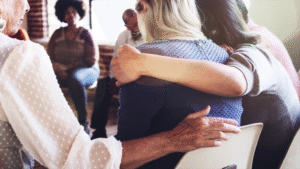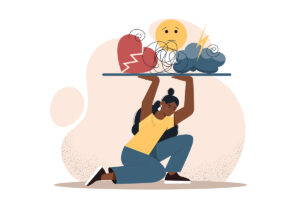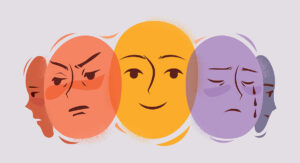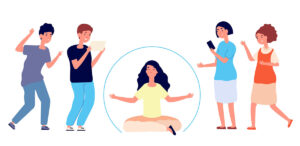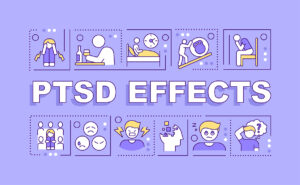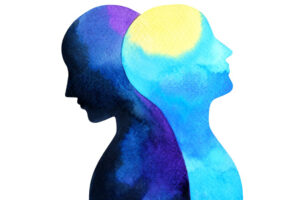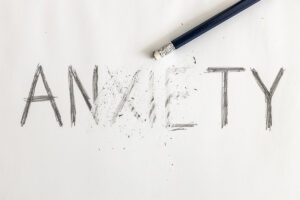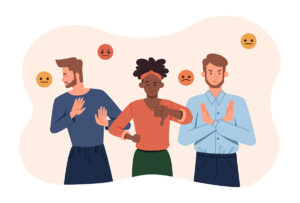Related Resources
For Resilience in Difficult Times
An Intro to Self-Havening with CPR for the Amygdala Practice
CPR for the Amygdala, which utilizes the Havening Touch plus Cognitive Distractions, is a powerful tool for decreasing stress and anxiety rapidly. Join Dr. Kate Truitt to learn how to welcome this powerful tool into your life today!
To start the exercise, Dr. Kate Truitt helps us release anything that has been coming into our mind subconsciously. She then asks us to welcome in havening touch and soothing breath.
Then she asks us to look back and find an experience that has been causing us stress. Once it’s been identified, she leads us to notice all of the sensory aspects of this experience. On a level of 1 to 10, she asks us to evaluate how stressful we rank this experience. After we do this, she guides us through a series of mindful breaths alongside our havening touch.
Once this is done, she asks us to reevaluate how stressful we rank this experience. If it’s still bothering us, she guides us through another round of the exercise. This exercise can be repeated as many times as it takes for us to release the stress surrounding an experience, and it can be repeated for different experiences as well.
A Guided Meditation for Finding Your Resilience in Difficult Times
Difficult moments pass and they carry wonderful opportunities for growth. It is only through leaning in with curiosity about these darker moments of our life while holding space for the stories that we tell ourselves that we become empowered to utilize the lessons of our past through the wisdom of our present to design the opportunities of our future.
Allyship With the LGBTQIA Community: “I Might Not Understand, But I Stand With”
By Dr. Kate Truitt
In honor of Pride Month, I would like to highlight something we embody in our practice known as “Allyship.” It forms the foundation of our Affirming Therapy, which embraces a positive view of LGBTQIA+ identities, relationships, and actively addresses negative influences that homophobia, transphobia, heterosexism have on them. As you might guess, outside of a therapeutic setting allyship can also be the basis of a friends and family support structure, regardless of whether the people in that support structure consider themselves to be part of the greater LGBTQIA+ community or not.
Allyship: The Foundation of Our Affirming Therapy

Allyship is based on a simple statement: “I might not understand, but I stand with.” During the Black Lives Matter protests, millions of people of all races, cultures, backgrounds and identities marched together. They were demonstrating allyship—the concept that it is not necessary to completely understand everything about another person’s culture to be able to stand alongside them and support them by amplifying their voices.
This year especially, members of the LGBTQIA+ community need allies. On June 6, 2023, the Human Rights Campaign declared a national state of emergency for LGBTQIA+ Americans, releasing this statement: “We have officially declared a state of emergency for LGBTQ+ people in the United States for the first time following an unprecedented and dangerous spike in anti-LGBTQ+ legislative assaults sweeping state houses this year. More than 75 anti-LGBTQ+ bills have been signed into law this year alone, more than doubling last year’s number, which was previously the worst year on record.”
The declaration was accompanied by a 50-state guidebook with information intended to ensure safety for LGBTQ+ residents and travelers.
In these difficult times of polarization in the public surrounding the LGBTQIA+ community, many of its members are subjected to degrading comments about their community. Many have traditionally been abandoned due to their identities.
Allyship can be a comforting light that all of us can carry as supportive family and friends. Anyone can fill the role of being an LGBTQIA+ ally. It begins from a place of awareness and understanding, and I would like to share what this looks and feels like in this blog article.
Allyship Starts With Understanding


Allyship starts with increasing awareness about the culture, beginning with identity definitions. The term “LGBT” and its meaning is familiar to most people. Over the years and awareness expanded, so has the range of identities, and so has the acronym:
Lesbian
Gay
Bisexual
Transgender
Queer or Questioning
Intersex
Asexual or Ally
+ Plus
The + at the end acknowledges that there is a wide range of identities within the community. Beyond these identities, there are gender-related definitions, including:
- Biological sex—what the doctor assigns a person at birth.
- Gender identity—how you feel on the inside
- Gender expression—how you present yourself to others
- Gender presentation—how the world sees you
- Sexual orientation—who you are attracted to and who you fall in love with
The LGBTQIA+ Experience
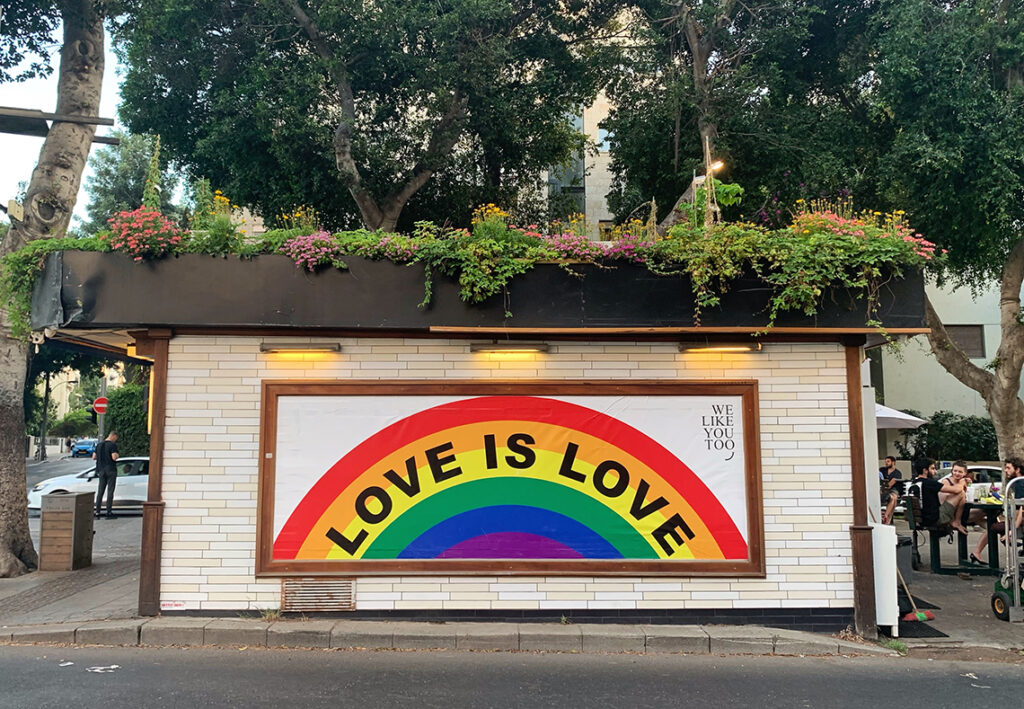
It is also important to understand the LGBTQIA+ experience in our world. In addition to regular, day-to-day struggles that we all face, LGBTQIA+ individuals often face discrimination, stigmatization, and even violence based on a facet of their identity. For them, discrimination not only shows up in school and in the workplace, but also at home. It is important to look at the experiences of LGBTQIA+ youth because they bring the effects of these traumatic life events into adulthood.
In a study by the Trevor Project, 28% of LGBTQIA+ youth reported experiencing homelessness or housing instability at some point in their lives. Those who reported having those experiences were two to four times more likely to report depression, anxiety, self-harm, considering suicide, and attempting suicide compared to those with stable housing. Among LGBTQIA+ youth, 16% reported that they had slept away from parents or caregivers because they had run away from home. Fifty-five percent of those who ran away from home said they did so because they had been mistreated or feared being mistreated because of their identity. Another 14% of LGBTQIA+ said they had slept away from parents or caregivers because they were kicked out of their homes or abandoned, with 40% saying they were kicked out or abandoned due to their identity (DeChants, et. al, 2022).
The Trevor Project’s 2023 U.S. National Survey on the Mental Health of LGBTQ Young People found the following:
- 41% of LGBTQ young people seriously considered attempting suicide during the past year, with young people who are transgender, nonbinary, and/or people of color reporting higher rates than their peers.
- Fifty-six percent of LGBTQ young people who wanted mental health care in the past year were not able to get it.
- LGBTQ young people who were physically threatened or harmed in the past year due to either their sexual orientation or gender identity reported triple the rate of attempting suicide in the past year compared to those who were not.
- Only 38% of LGBTQ young people reported they found their home to be LGBTQ-affirming.
- LGBTQ young people who had access to affirming homes, schools, community events, and online spaces reported lower rates of attempting suicide (The Trevor Project, 2023).
These statistics show how complicated life can be for LGBTQIA+ people. Where do most of us go for that connection, warmth and love we seek? Home, right?
Those in the LGBTQIA+ community who still choose to connect with their family of origin throughout their lives during family get-togethers or holidays may face microaggression, verbal abuse and traumatic memories. Those who are not allowed that choice or who choose to make a new family other than their family of origin may feel heightened shame, a lack of belonging, and traumatic memories.
Beyond the family, LGBTQIA+ people have less social support, especially in areas with small LGBTQIA+ populations or if they have been rejected by their family of origin. Bisexual people may feel more isolated because they face stigma in both the heterosexual and LGBTQIA+ communities.
This all can lead to depression, suicidality and more. Given the fact that LGBTQIA+ individuals are nearly three times more likely than heterosexuals to experience depression, anxiety, and substance abuse, they are at heightened risk. So where do LGBTQIA+ people go for that comfort when home, to say the least, may be a highly uncomfortable place?
They find allies or allies find them.
Being an LGBTQIA+ Ally Takes a Little Work On Ourselves
Chances are, someone or multiple people in your family and social circle identify as LGBTQIA+. As I explained in my definition of allyship, you don’t have to be in the community or necessarily have a deep grasp of the identities and culture. You just need to have the empathic ability to support their needs and struggles. Awareness of the unique struggles they face is the best place to start.
Watching Out for Our Implicit Bias
No matter how well-intentioned we might be in our allyship on behalf of others of different backgrounds and identities, we all have implicit biases that will find their way into the way we talk and behave. We need to be mindful that these biases exist. More than that, we need to actively confront them, so we avoid unconsciously stereotyping people. To do that we have to learn to intentionally take the other person’s perspective.
Take a moment to try to imagine what it would feel like to be an LGBTQIA+ person. What would your concerns and worries be? I like to present a short implicit bias awareness exercise for non-LGBTQIA+ people, taken from the “Heterosexual Questionnaire” created back in 1972 by Martin Rochlin, PhD, a pioneer in the field of gay-affirmative psychotherapy. Please take a moment to consider and answer the five questions below:
- What do you think caused your heterosexuality?
- Is it possible that your heterosexuality is just a phase you may grow out of?
- Why do you insist on being so obvious, and making a public spectacle of your heterosexuality? Can’t you just be who you are and keep it quiet?
- Why do heterosexuals place so much emphasis on sex?
- Do heterosexuals hate or distrust others of the same sex? Is that what makes them heterosexual?
Do you notice anything different? Did considering these questions cause a physical reaction in your mind and body? For most people it does, because it gives a slight glimmer of what it is like to be on the other end of questions like these and helps us gain awareness of our implicit biases. That awareness is a first step in getting a handle on them.
Moving Forward With Allyship
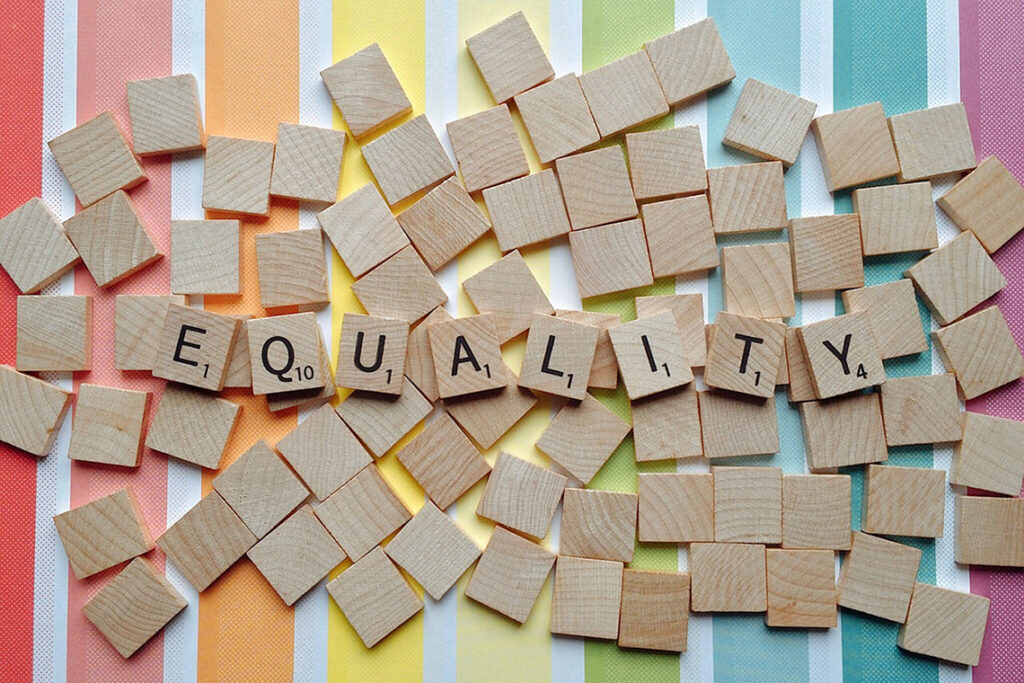
Gaining an understanding the LGBTQIA+ community, putting yourself in their shoes and showing them your love and light are good first steps, but true allyship means following up with solidarity and action. The following are some things you can do:
- Talk about your LGBTQ affirmative stance to colleagues, family, & friends, even when it feels uncomfortable.
- Openly & actively strive for social justice & equality.
- Support & share LGBTQ art, businesses, literature, media, & organizations.
- Get involved in LGBTQ community events & activities, such as PRIDE.
Attachment and connection are key to our vitality and resilience as humans. I always urge potential allies to be mindful that there are people out there who need extra help. That usually shows up with people isolating themselves. If you notice that LGBTQIA+ family members or friends have suddenly dropped out of the picture, make an intentional effort to reach out and connect.
If you are an LGBTQIA+ person struggling with difficult times, our team of therapists and counselors at Dr. Kate Truitt & Associates are dedicated to fostering personal growth free of cultural, sexual orientation, and gender biases. We strive to provide a safe, affirming, and compassionate environment to everyone who walks through our doors. Each of our therapists has extensive experience and training on working with LGBTQIA+ individuals and families, and we are also familiar with non-monogamous relationship structures. We are here to help. Contact us today.
References
DeChants, J. P., Green, A. E., Price, M. N., & Davis, C. K. (2021). Homelessness and housing instability among LGBTQ youth. The Trevor Project. https://www.thetrevorproject.org/research-briefs/homelessness-and-housing-instability-among-lgbtq-youth-feb-2022/
The Trevor Project. 2023 U.S. national survey on the mental health of LGBTQ young people. https://www.thetrevorproject.org/survey-2023/
Our emotional and physical health and well-being are undeniably entwined and intricately connected. Anything—not just trauma—that impacts our body will impact our mind and vice-versa.
The good news is that we have the power of self-healing in our hands with the mindful touch of The Havening Techniques.
If you are interested in building your own personalized self-healing journey, check out my book titled, “Healing in Your Hands: Self-Havening Practices to Harness Neuroplasticity, Heal Traumatic Stress, and Build Resilience,” released in December and available on Amazon.



